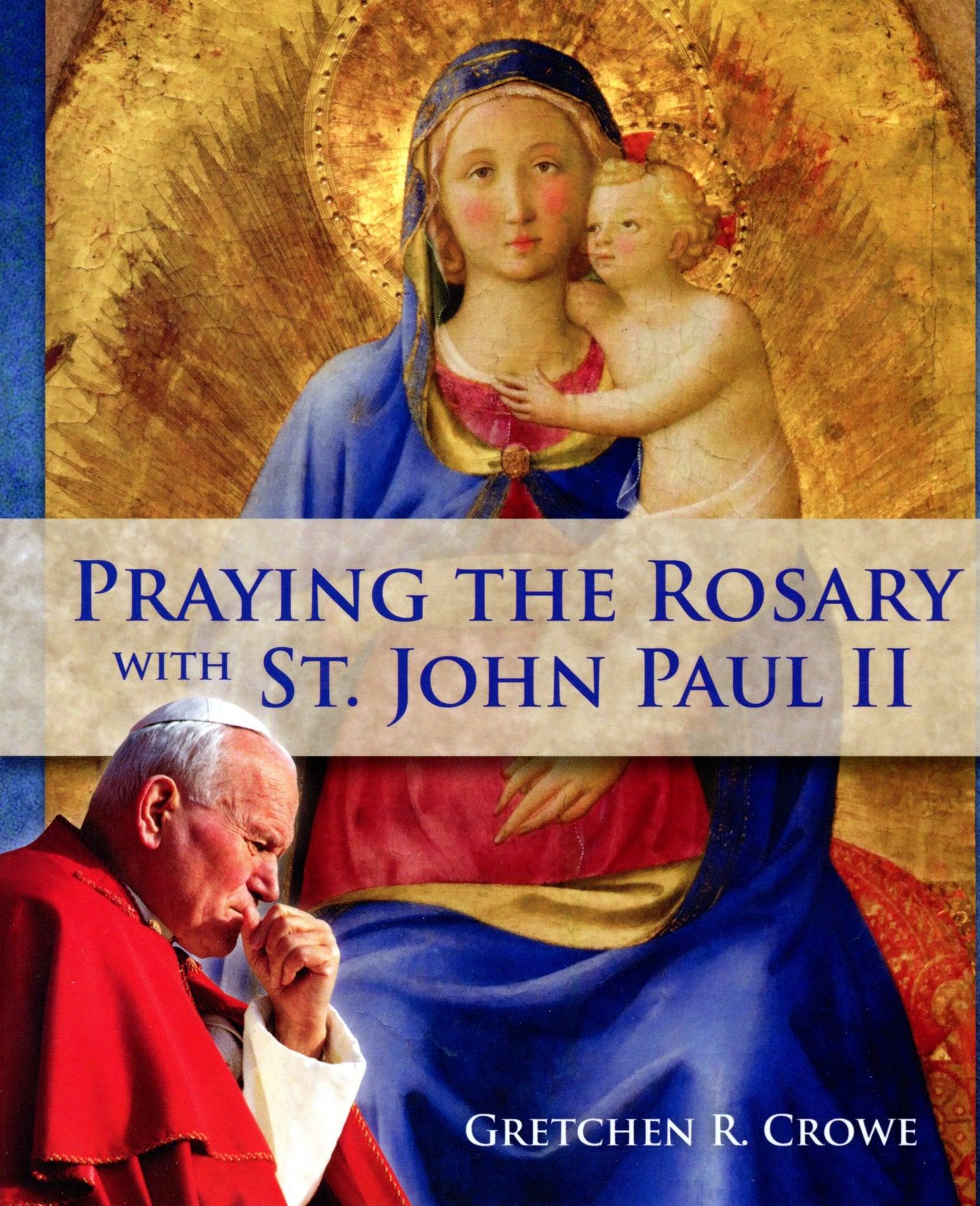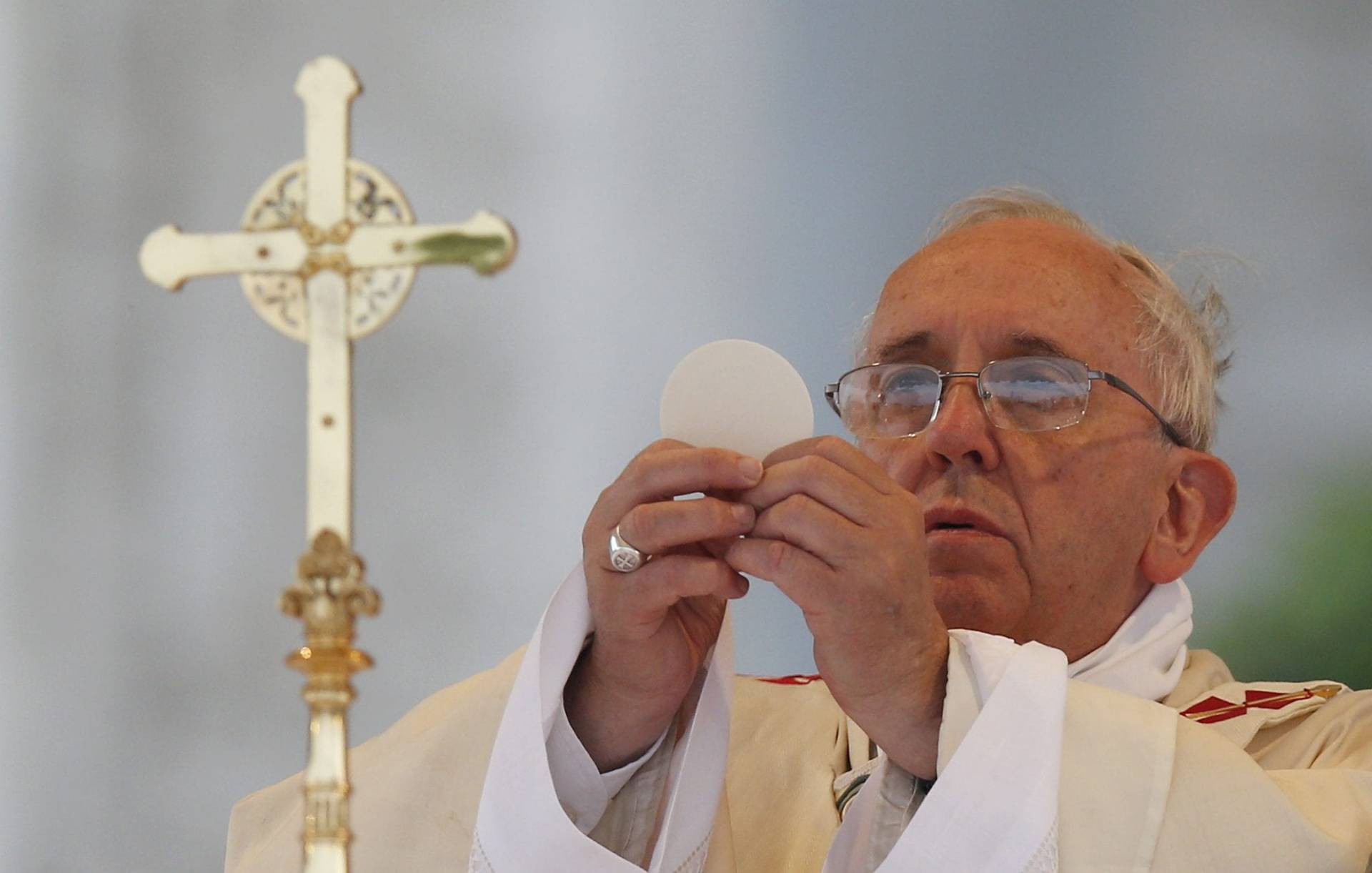One evening a couple of years ago, I saw a bloodstained Eucharistic host.
It was displayed in a home in Worcester, Massachusetts, about a five-minute drive down the street from my house. The host was the sixth Eucharistic phenomena associated with the late Audrey Santo — a young woman who was left mute and motionless after an accident in 1987.
Up until her death in 2007, “Little Audrey,” as she was called, became the focal point for intense devotion as a “victim soul” who offered up her own sufferings for the salvation of others. Her case also attracted intense criticism, particularly given the claims about supernatural happenings in her presence.
With the appearance of another bloodstained host after her death, such questions re-emerged — especially since a case is being prepared to propose that Audrey Santo be considered for sainthood by the Roman Catholic Church.
That night in Worcester, no one was talking about whether the bloodstained host was “real” — and not only because the blood stain seemed self-evidently true to many. Instead, people were sharing what they thought the bloodstain resembled: Some saw the outlines of a crown of thorns; others saw “an open, bleeding wound.” The Eucharist became a focal point for a series of symbolic associations arising from elements of Catholic devotion and experiences of the contemporary world as broken and bleeding.
Back when I was younger, I remember being taunted by friends for being a “Catholic cannibal” because the consecrated host received at Mass by the faithful is understood to be the real Body and Blood of Christ. And the Catholic as cannibal theme is back with a vengeance — a paradoxical point of pride for Catholics and a blood sport for atheists.
The phenomena associated with Audrey Santo have not received official Church approval, though the dark stains were once tested and were positive for human antigens. But there are nearly 100 cases of bleeding or bloodstained hosts that have received official or semi-official sanction by the Catholic Church. For example, in Sokolka, Poland last year, the archbishop of Bialykstok brought out a bloodstained host for veneration by the faithful. These days, it’s easy to find reports of bleeding hosts — just Google it and you’ll see.
A wave of miracles or a wave of frauds. Take your pick.
The real presence of Christ in the Eucharist is a foundational point of Catholic doctrine. During celebration of the Mass, the unleavened bread and the wine become the real “body and blood” of Jesus Christ. This process is called “transubstantiation:” the inner reality of the elements are transformed, and only the external appearance of bread and wine remain. There are a number of technical Catholic terms that describe this internal transformation, such as “substance,” “species,” and “accident.”
The brilliant medieval theologian Thomas Aquinas examined the philosophical issues and conundrums elicited by the belief in transubstantiation. Most interestingly, Aquinas addressed the confession of an earlier theologian, Berengarius of Tours, who was forced to assert that Christ’s bones were truly crushed by teeth when laypeople received the consecrated host during Holy Communion. To this very literal interpretation, Aquinas responded that “Christ’s very body is not broken” but only “under the sacramental species.”
In other words, Christ’s presence is real and bodily, but this real and bodily presence is not to be understood as the same as Christ’s real and bodily presence as a historical being like you and me. Under the species of bread and wine, as Paul VI made clear, Christ “is present whole and entire in His physical ‘reality,’ corporeally present, although not in the manner in which bodies are in a place.” We Catholics aren’t cannibals — not exactly, anyway.
Since a bloodstained Eucharistic host would presumably be quite easy to fake, it’s more common to see the Catholic Church distance itself from such claims, rather than naively endorse them. But there is something about Christ’s real, bodily presence that Catholics see as particularly comforting in an age such as ours: Jesus might be hidden, but he is present among us nonetheless.
Aggressive atheists have picked up on this particularly Catholic form of devotion. When a Polish diocesan study found a piece of human heart tissue in the miraculous host of Sokolka, local atheist groups pushed for an investigation into whether a crime had been committed. Wafers have been sold on eBay, and there was quite a hubbub when a Satanic mass was planned at Harvard. An earnest, though somewhat angry, Minnesota professor wrote on his blog that he had pierced a “goddamned cracker” with a rusty nail and threw it in the trash along with old coffee grounds and a banana peel. (He also supported a young man who posted videos on YouTube — later removed — of him desecrating the host in various ways.) A duo from Texas — two bearded guys wearing baseball caps — has posted videos showing how wafers go good with queso.
In all of these cases, it is unclear whether actual consecrated hosts were used. But this mockery strangely shows the power of the belief in Christ’s Eucharistic presence. If you really hate Christianity, then physically lashing out at Christ’s body must be quite satisfying indeed.
That night in Worcester, I was asked what I saw when I looked upon the bloodstained host. At first, all I saw were seemingly random blotches and streaks. But then an image slowly came into focus — it was the Madonna and child.
What was going on?
A miraculous epiphany? A religious Rorschach test? The power of persuasion? To me it felt like all of those things — all at the same time.














